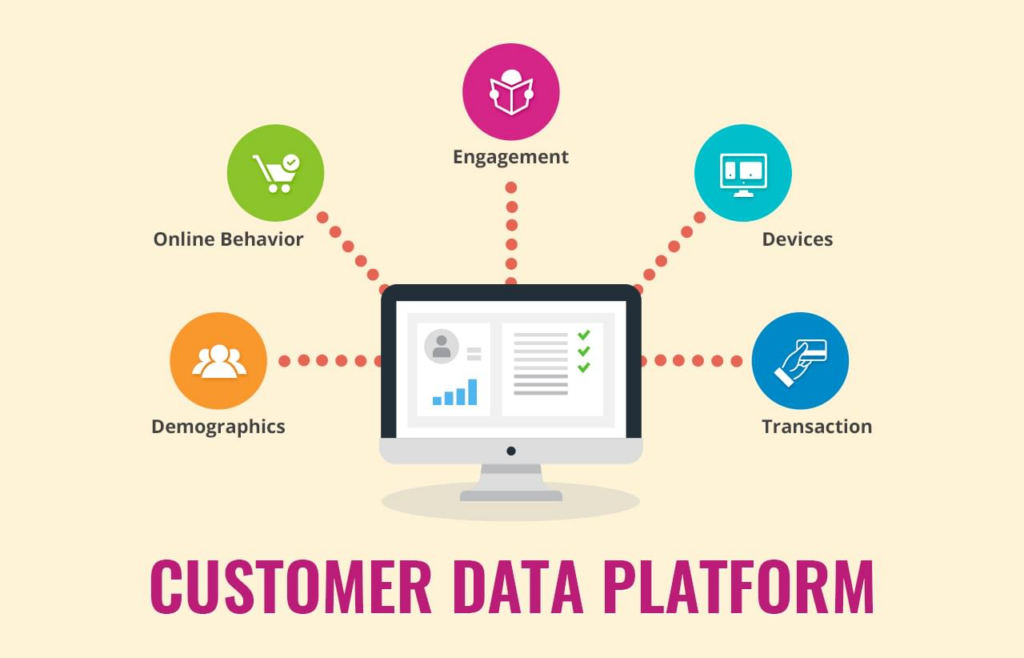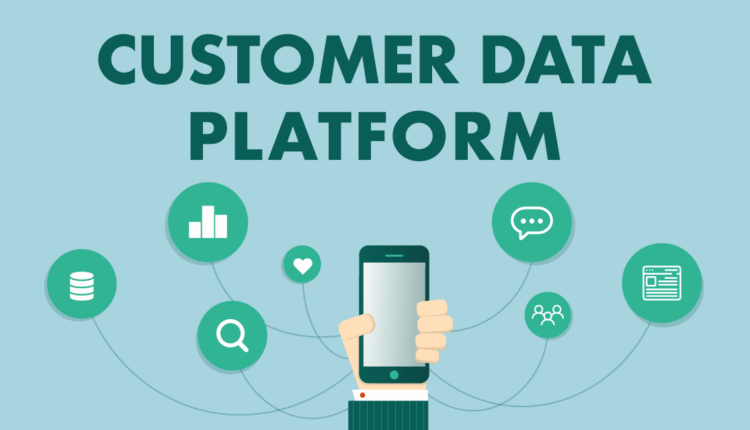In modern digital time, companies receive large amounts of customer information from many different places. Using this data well is indeed crucial for making custom experiences and helping the business to grow. This is where Customer Data Platforms (CDPs) become important. Let’s look into what CDPs are, their benefits, and why they are crucial for today’s businesses.
What is a Customer Data Platform (CDP)?
A Customer Data Platform (CDP) is a type of software that gathers, arranges, and centralizes data about customers from different places. It makes one complete customer profile which companies can use for specific marketing actions, thus making experiences more personal, and better service to customers.
CDPs collect information from many places like websites, mobile apps, social media, CRM systems, email marketing tools, as well as others. By putting all this data together in one place, CDPs give a complete picture of each customer. This further helps businesses to know their audience better and connect with them more efficiently.
Key Features of Customer Data Platforms
- Data Integration: CDPs gather data from various sources and formats, ensuring seamless integration.
- Data Unification: They consolidate disparate data into unified customer profiles.
- Real-Time Data Processing: CDPs keep customer profiles updated right away, making sure the newest details are always ready to use.
- Segmentation: They allow for sophisticated audience segmentation based on various criteria.
- Data Activation: CDPs let businesses use customer data in many marketing and engagement platforms.
Benefits of Using Customer Data Platforms
1. Enhanced Personalization
One big benefit of CDPs is they can give very personalized experiences. By showing all the details about what customers like and do, CDPs help businesses customize their marketing messages as well as product suggestions for each person.
2. Improved Customer Insights
Handling customer data from different places can be hard. Customer Data Platforms (CDPs) make this easier by bringing all the data together in one place, cutting down on separate systems, as well as making sure that information is consistent and correct throughout the company.
3. Better Marketing ROI
When businesses aim exactly with their messages to the right people, they make their marketing earn more money back. Using CDPs helps create better campaigns that waste less money on ads and get more people to buy things.
4. Compliance and Data Privacy
CDPs help companies follow data privacy rules like GDPR and CCPA. They offer a main place to handle customer agreements and choices, therefore making sure that information is used in a responsible and clear way.
How CDPs Differ from Other Data Management Tools
It is important to tell apart CDPs from other data management tools like Data Management Platforms (DMPs) and Customer Relationship Management (CRM) systems.
– CDP vs. DMP: A DMP mostly works with anonymous data from third-party sources, primarily for advertising uses. On the other hand, a CDP deals with first-party data to create detailed profiles of customers.
– CDP vs. CRM: CRMs focus mainly on managing direct interactions with customers, helping in sales and service parts of business. On the other hand, CDPs gather data from different sources to give a complete picture of the customer, which helps more in marketing and keeping customers engaged.
Implementing a CDP: Best Practices
1. Define Clear Objectives
Before you start using a CDP, it is very important to set clear goals. Think about what you want to accomplish, such as making personalization better, getting more understanding of customers, or making data management simpler.
2. Ensure Data Quality
How well a CDP works relies on how good the data it takes in is. Make sure that data from every source is correct, whole, as well as current. Regularly clean and validate data in order to maintain its integrity.
3. Foster Cross-Department Collaboration
CDPs are good for many parts of a company, like marketing, sales, and customer service. It is helpful to encourage teamwork among these groups so everyone knows how to use the CDP well.
4. Choose the Right CDP Vendor
Choosing the correct CDP provider is indeed very important. Find a solution that matches your particular needs, works well with what you already use, and also provides strong support and the ability to grow bigger easily.
Future Trends in CDPs
The CDP landscape is evolving rapidly, with several emerging trends shaping its future:
- AI and Machine Learning: Advanced CDPs are now using AI and machine learning to give predictive analytics and better customer insights.
- Integration with New Channels: As new ways to talk with customers come up, CDPs are getting better at using data from IoT gadgets, voice helpers like Alexa and Siri, and other things too.
- Improved Privacy Functions: As concern for data privacy grows, CDPs are making stronger features to follow rules and gain customer trust.
Conclusion

Customer Data Platforms are indeed changing the way companies handle and use customer information. With a single view of each customer, CDPs help businesses offer better personalization, gain more detailed insights, and also manage data more efficiently. As the digital world keeps changing, using a CDP can indeed give businesses an upper hand, aiding them in offering great customer experiences and boosting growth. Whether you are working as a marketer, data analyst, or business leader, knowing about and using the strength of a CDP is crucial for doing well in today’s information-focused environment.
FAQs about Customer Data Platforms
1. What is a Customer Data Platform (CDP)?
A Customer Data Platform (CDP) is a software system that collects, organizes, and centralizes customer data from various sources to create unified customer profiles. This data then helps businesses personalize marketing, improve customer insights, and enhance customer service.
2. How does a CDP differ from a CRM or DMP?
A CDP focuses on integrating and unifying first-party data in order to provide a comprehensive customer view for marketing and engagement. A CRM manages direct customer interactions, mainly for sales and service. Meanwhile, a DMP handles anonymous third-party data primarily for advertising purposes.
3. What are the key benefits of using a CDP?
CDPs offer several benefits, including enhanced personalization, improved customer insights, efficient data management, better marketing ROI, and compliance with data privacy regulations like GDPR and CCPA.
4. How can a business ensure successful CDP implementation?
To ensure successful CDP implementation, businesses should define clear objectives, maintain high data quality, foster cross-department collaboration, and also choose the right CDP vendor that fits their specific needs and integrates well with existing systems.


